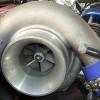Fj20 Multiple Dyno Problems, Wastegate Issues To Down On Power
Announcements
-
Similar Content
-
Latest Posts
-
By Dose Pipe Sutututu · Posted
In other news, congrats @TurboTapin for winning the case. -
By TurboTapin · Posted
Even Phillips screws here are now mostly a hybrid that allow Robertson to also fit into it. They have accepted defeat haha. @GTSTBOY -
I'll bet the 34 one does work in a 33 if it worked in a 32, like a throttle cable the only things that matter are the connection at each end and the cable not being too short (too long is OK). The good thing is the 34 is sintered metal while 32, and I think I saw 33) are plastic ends so likely to last longer.....if you can find one,
-
Well, it's just a solid core cable in an outer. Buy a (longer) cable for something else, take them both apart and build one for the 34?
-


1.thumb.png.36afd656b26d55f5d425fc76e21561f2.png)


Recommended Posts
Create an account or sign in to comment
You need to be a member in order to leave a comment
Create an account
Sign up for a new account in our community. It's easy!
Register a new accountSign in
Already have an account? Sign in here.
Sign In Now